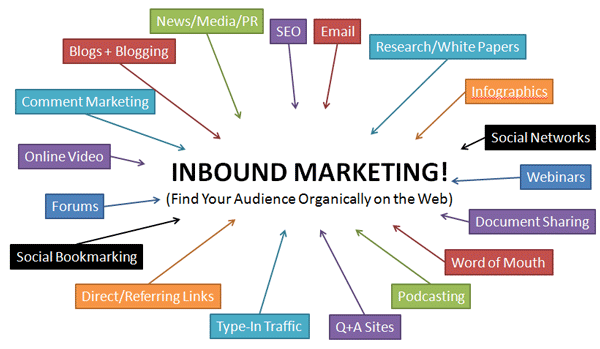
Having a well thought-out online marketing plan is one of the first steps you must take for growing your business in today’s 24/7 digital world. Your website is what represents your business to numerous potential customers. It is the first impression they have of who you are as a business and what you have to offer. Obviously, this is one of the most important factors in developing a stand-out online presence.
There are several things you must do if you’re considering an update to your company’s website. It is important that you go into the process with a well planned strategy in order to make your website what it needs to be. Not only is your website often the first impression consumers have of your company, but it also affects every other aspect of your online presence: social media, brand awareness, email marketing, and so on. Below you will find our top 10 tips for turning your website into an impressive lead generating instrument for your business.
- Define Your Goals
What is your motivation for redesigning your website? Obviously potential lead generation will play a big part. But are there other factors as well? Take a moment to reflect on what you want out of your website, and consider how you’ll evaluate and measure your progress. Come up with a list of metrics you want to track for your measurements, and see where you currently stand and where there is major room for improvement.
There are a number of metrics to keep an eye on when defining your future goals. A few of our suggestions are:
- Number of visits
- Bounce rate
- Time on site
- Number of new leads (form submissions)
- Total amount of sales generated
- Current SEO rankings for important keywords
- Study Your Current Metrics
Taking stock of your current metrics gives you an excellent place to start when redesigning your website with lead generation in mind. Take a look back as far as you deem necessary, and use that info to clarify what you hope to gain in the future. The imperative metrics to determine are also those used in tip #1 to define your goals: number of visits, bounce rate, time on site, etc. This will allow you to see exactly where the most room for improvement can be found.
- Take a Good Look at the Competition
Any good marketing strategy will consider what is being done by the competition. After all, your goal is to outshine whatever efforts they may be putting in and become the number one choice in your industry. Spend a good amount of time perusing their website. Take into account what you like and what you don’t like while viewing the site with the eye of a consumer, not a competitor. You obviously never want to copy what they are doing, but being aware of their pitfalls can only help you to create a better site.
- Design Your Site for Your Buyer Personas
Creating customer personas based on your ideal client, and then using that to design your website, is a fabulous way to ensure that you are speaking to the exact type of client you hope to gain. Design your content around what these customers will be looking for. Identify the needs of your target customer, and speak to those throughout your site. You can communicate with multiple personas throughout your website by segmenting content into categories that are easy to sort through.
- Create a Solid Content Strategy
The more quality content you have to offer in the online space, the better it is for your business. A large amount of content shows your potential clients that you have a lot to offer. They will begin to look to you for industry information and view you as a valuable resource. Building your content strategy with the goal of consistently adding fresh content to your website will ensure that consumers will keep coming back for more. Starting a blog is one of the best ways to constantly push out new, up-to-date content for your clients.
- Optimize for Search
All of the effort that goes into creating a valuable, lead generating website is a waste if no one can find you online. Search Engine Optimization is one of the most important things to consider when redesigning your website. A few things to note when considering an SEO strategy:
- Determine Your Most Valuable Pages
Through metrics, determine what pages on your site are the most searched, most visited, and have the strongest keyword rankings.
- Research Keywords
Choose one or two keywords that each individual page will focus on. After deciding on these keywords, use on-page SEO tactics to enhance your efforts.
- Create a 301 Redirect Strategy
Be sure to keep track of any highly ranked pages that may be moving, and after creating proper 301 redirects, keep track of these changes on a spreadsheet.
- Utilize Calls-to-Action
The goal of your website is to drive your visitors to take an action. No longer will a static website serving as an online brochure cut it. You want to prompt them to engage further, whether it be through downloading content, signing up for an email newsletter, or making a purchase. Sprinkling CTA buttons and graphics throughout your site is an easy way to promote this engagement.
- Take an Inventory of Online Assets
Before you jump into a website redesign, take an inventory of what content you currently have online. You want to ensure that you don’t remove a piece of content that drives a lot of traffic or is often shared or viewed. If that is done you run the risk of losing a lot of SEO credit, which could decrease your overall online rankings.
- Be Clear on Your Unique Value Proposition
Before you begin developing content, be sure to define your Unique Value Proposition. It’s important that your UVP is consistent across your entire website. Your UVP is not your corporate mission statement. Instead, it is how you inform your potential clients exactly who you are and what you can do for them in a way that is clear, concise, and easy to understand.
10. Include Extras!
Aside from a robust and dynamic website, there are several other online assets that are vital to your companies success. A few things you should consider developing for your business are:
- A Blog
A blog is the best way to continuously provide fresh content for your potential and current clients.
- RSS Subscription
RSS is a simple way for consumers to subscribe and immediately be updated when new content is released from your blog or website.
- Analytics
Analytics are the best way to measure the success of your redesign.
- Social Sharing Buttons
Make it easy for consumers to share your content across various sites through social sharing buttons.
As you can see, a successful website redesign begins long before the actual design work starts. Turning your website into a lead generating machine is no easy feat, and it is one that you should put much consideration into before jumping in.
Keep in mind that a successful website integrates other aspects of your online presence, from a blog, to email, to PR and advertising. Your overall online marketing strategy plays a big part in the success of your business, both online and off. By following the tips above you should be well on your way to creating a dynamic online presence and a well-oiled lead generating machine.


Comments